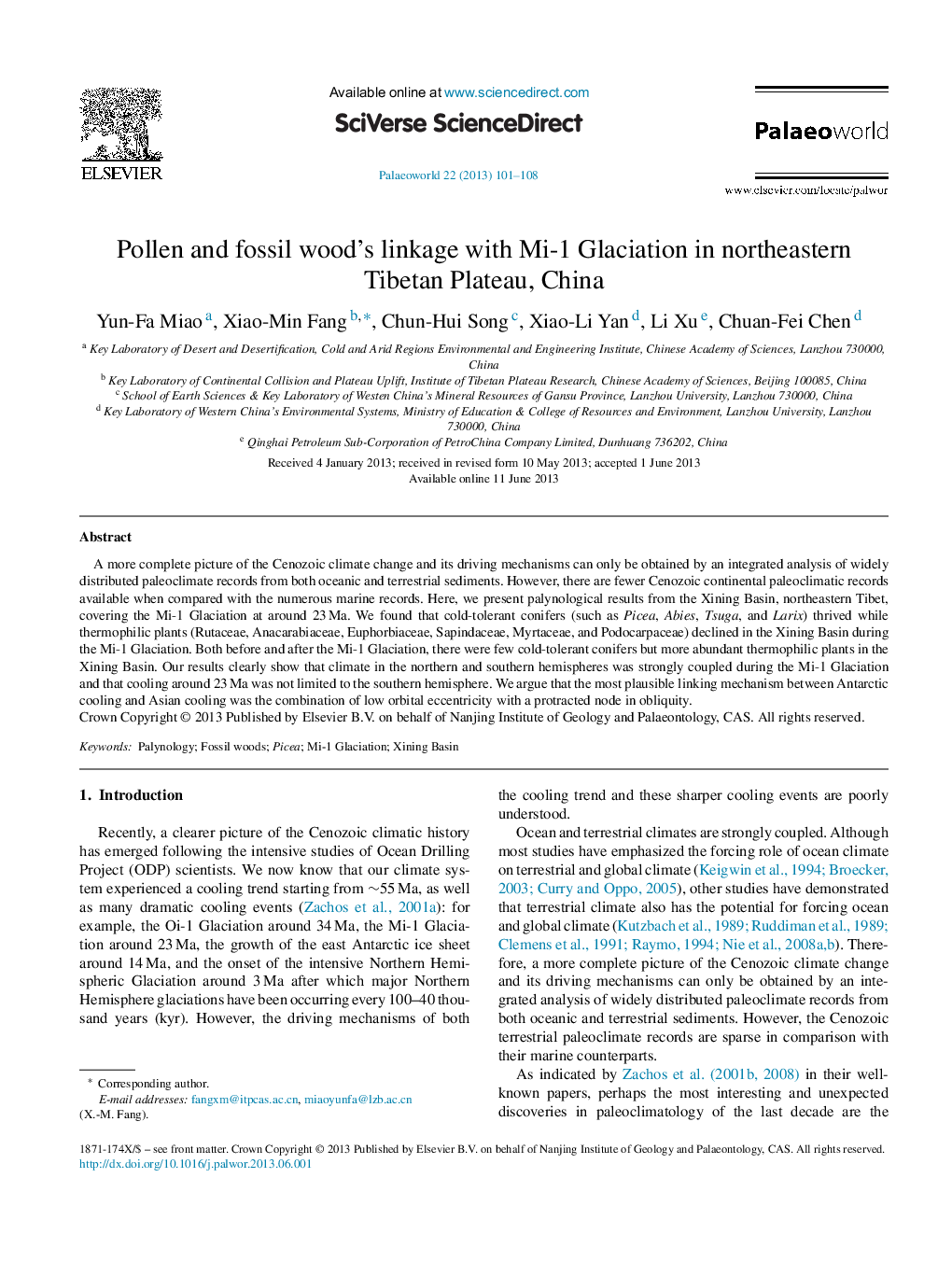| Article ID | Journal | Published Year | Pages | File Type |
|---|---|---|---|---|
| 4749688 | Palaeoworld | 2013 | 8 Pages |
A more complete picture of the Cenozoic climate change and its driving mechanisms can only be obtained by an integrated analysis of widely distributed paleoclimate records from both oceanic and terrestrial sediments. However, there are fewer Cenozoic continental paleoclimatic records available when compared with the numerous marine records. Here, we present palynological results from the Xining Basin, northeastern Tibet, covering the Mi-1 Glaciation at around 23 Ma. We found that cold-tolerant conifers (such as Picea, Abies, Tsuga, and Larix) thrived while thermophilic plants (Rutaceae, Anacarabiaceae, Euphorbiaceae, Sapindaceae, Myrtaceae, and Podocarpaceae) declined in the Xining Basin during the Mi-1 Glaciation. Both before and after the Mi-1 Glaciation, there were few cold-tolerant conifers but more abundant thermophilic plants in the Xining Basin. Our results clearly show that climate in the northern and southern hemispheres was strongly coupled during the Mi-1 Glaciation and that cooling around 23 Ma was not limited to the southern hemisphere. We argue that the most plausible linking mechanism between Antarctic cooling and Asian cooling was the combination of low orbital eccentricity with a protracted node in obliquity.
